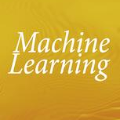Heatwaves, intensified by climate change and rapid urbanisation, pose significant threats to urban systems, particularly in the Global South, where adaptive capacity is constrained. This study investigates the relationship between heatwaves and nighttime light (NTL) radiance, a proxy of nighttime economic activity, in four hyperdense cities: Delhi, Guangzhou, Cairo, and Sao Paulo. We hypothesised that heatwaves increase nighttime activity. Using a double machine learning (DML) framework, we analysed data from 2013 to 2019 to quantify the impact of heatwaves on NTL while controlling for local climatic confounders. Results revealed a statistically significant increase in NTL intensity during heatwaves, with Cairo, Delhi, and Guangzhou showing elevated NTL on the third day, while S\~ao Paulo exhibits a delayed response on the fourth day. Sensitivity analyses confirmed the robustness of these findings, indicating that prolonged heat stress prompts urban populations to shift activities to night. Heterogeneous responses across cities highlight the possible influence of urban morphology and adaptive capacity to heatwave impacts. Our findings provide a foundation for policymakers to develop data-driven heat adaptation strategies, ensuring that cities remain liveable and economically resilient in an increasingly warming world.
翻译:暂无翻译




